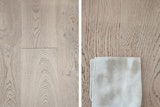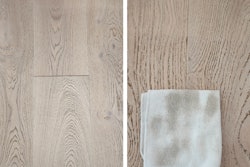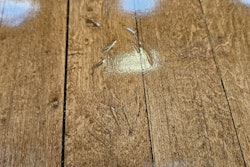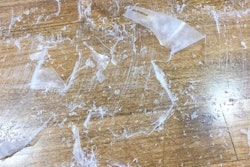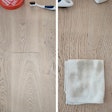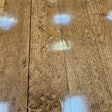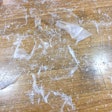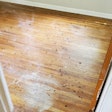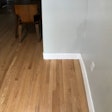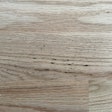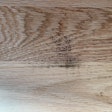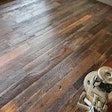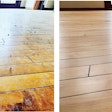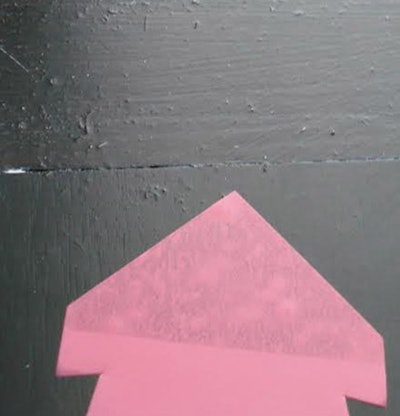
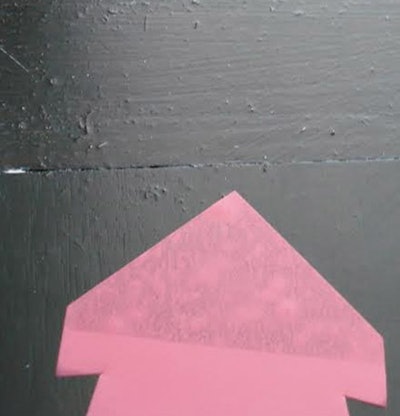 Debris was discovered in the corners of the floor one year after recoating.
Debris was discovered in the corners of the floor one year after recoating.
The Homeowners' Issue
Soon after buying their home, the homeowners noticed the wood floor had small scratches and dents. They called a wood floor contractor, who said they should be able to save the floor with a recoat. One year after the recoat, the homeowners hired new housekeepers who noticed rough finish in almost every corner of the floor. The contractor was contacted; he said an inspection needs to be completed under normal lighting and that one should expect some minor imperfections, and a certified wood floor inspector was contacted.
Roy: The Inspector's Observations
The inspection revealed the finish had contamination/debris that appeared to be pieces of dried finish, mostly visible in the corners of the rooms under normal lighting from a standing position. The contractor said he applies finish exactly the same way on every job and has never had complaints. He also said he and his crew clean the cut-in brush after every application and soak it in mineral spirits.
I asked the contractor to go out to his van and clean his brush as if he were going to use it for final coat, and, after he'd done so, I parted the bristles and found dried finish. I assumed this was not the brush that created the problem, but he had said he always has the same the finishing process. My conclusion was that there was clearly visible finish contamination in the corners that was consistent with the use of a dirty brush.
 Dried finish was found in a cut-in brush.
Dried finish was found in a cut-in brush.
Blake: The Attorney's Analysis
Assuming there are no provisions in the original agreement limiting the time period when the homeowner can complain, the question is whether the contractor was negligent.
A person pursuing a negligence claim must prove four things:
1) Duty: Did the contractor have a duty to perform the work in a non-negligent manner?
2) Breach of that duty: Did the contractor breach the duty and perform negligently?
3) Causation: Did the contractor's breach of duty cause damage to the homeowner?
4) Damages: What is the amount?
In this case, elements 1, 3 and 4 all seem clear. The contractor had a duty to do the work correctly; the problems in the corners were caused by allowing debris to get into the finish; and the homeowner will have to pay to fix the issue. The question now is whether the contractor departed from conduct expected of a reasonably prudent person under similar circumstances.
While it appears a dirty brush was used, the homeowner likely cannot prove that with certainty because we do not have the original brush. However, after the expert asked the contractor to clean his brush, it was found to still be dirty, and the contractor stated that he uses the same cleaning process every time. Therefore, the homeowner could assert that the way the contractor cleans brushes is not "reasonably prudent."
If the case went to court, the homeowner must convince the judge or jury that the contractor was negligent. Based on what we know, I believe a judge or jury would decide it is likely the contractor was negligent in allowing debris to get in the corners. Perhaps it occurred because the contractor used a dirty brush, but ultimately the contractor was the only one with control of the finishing.











